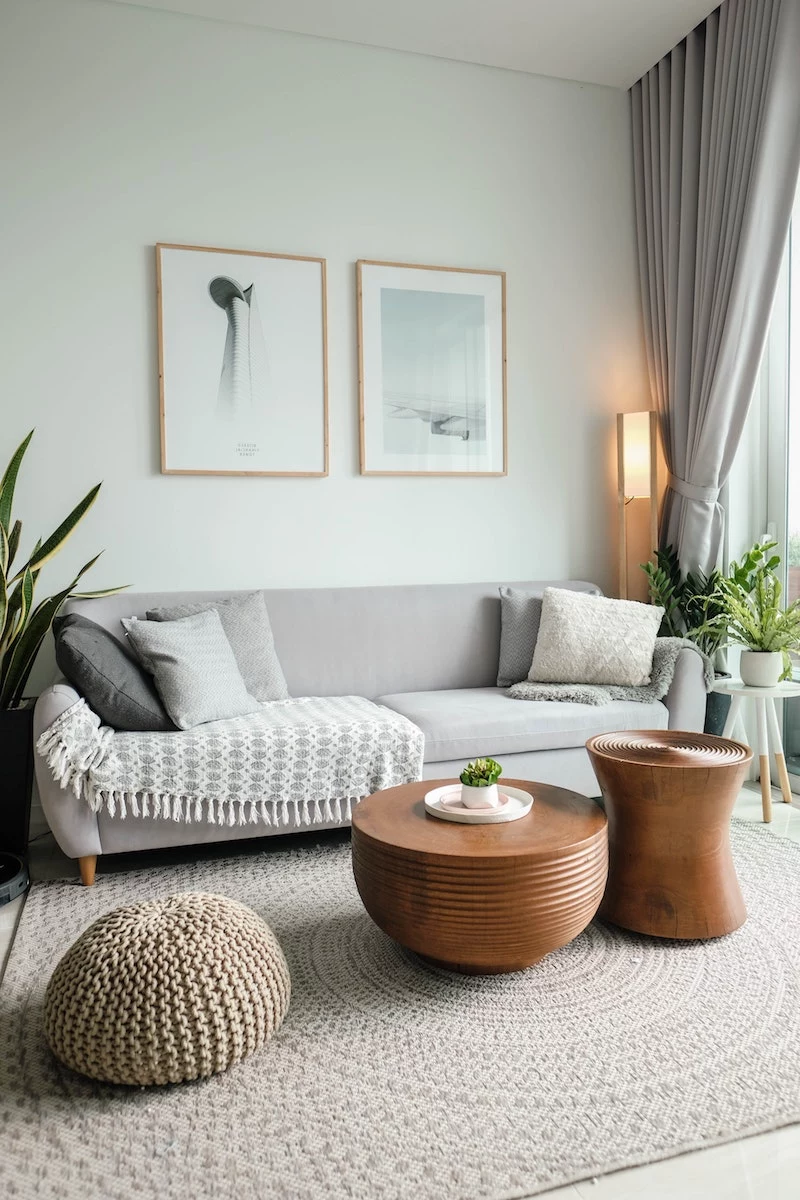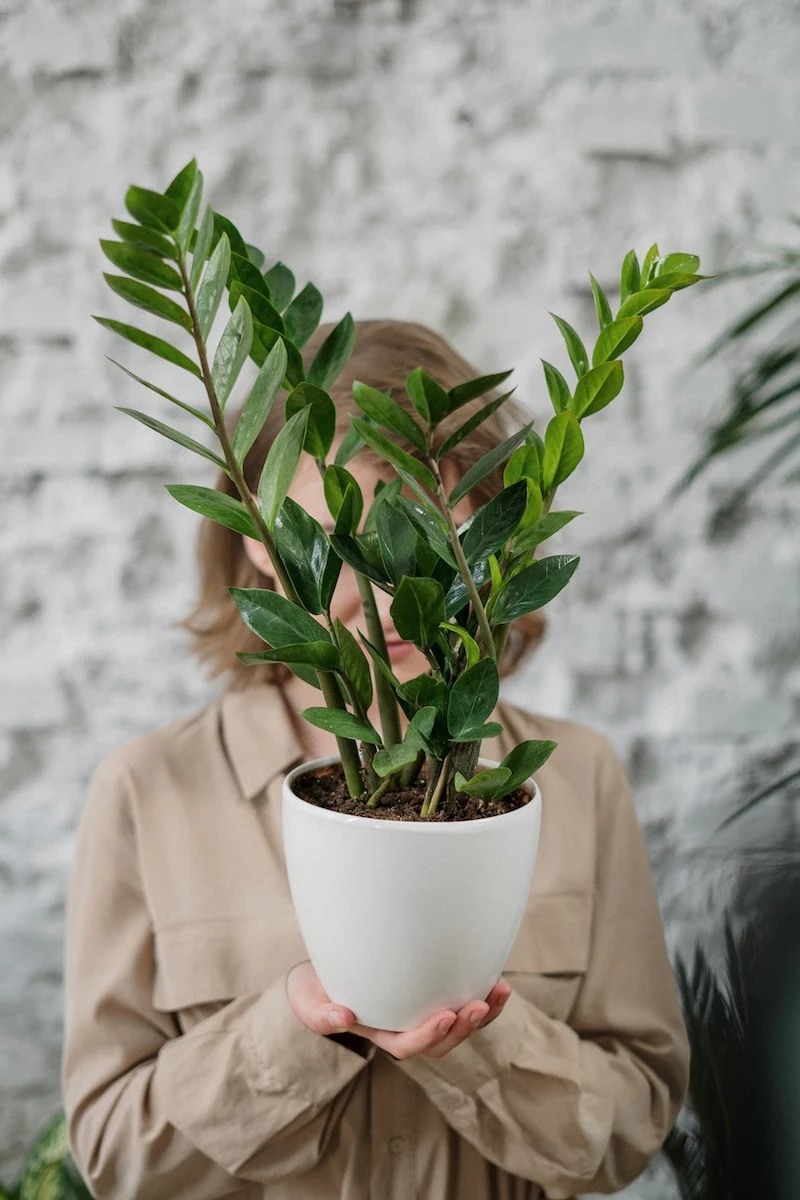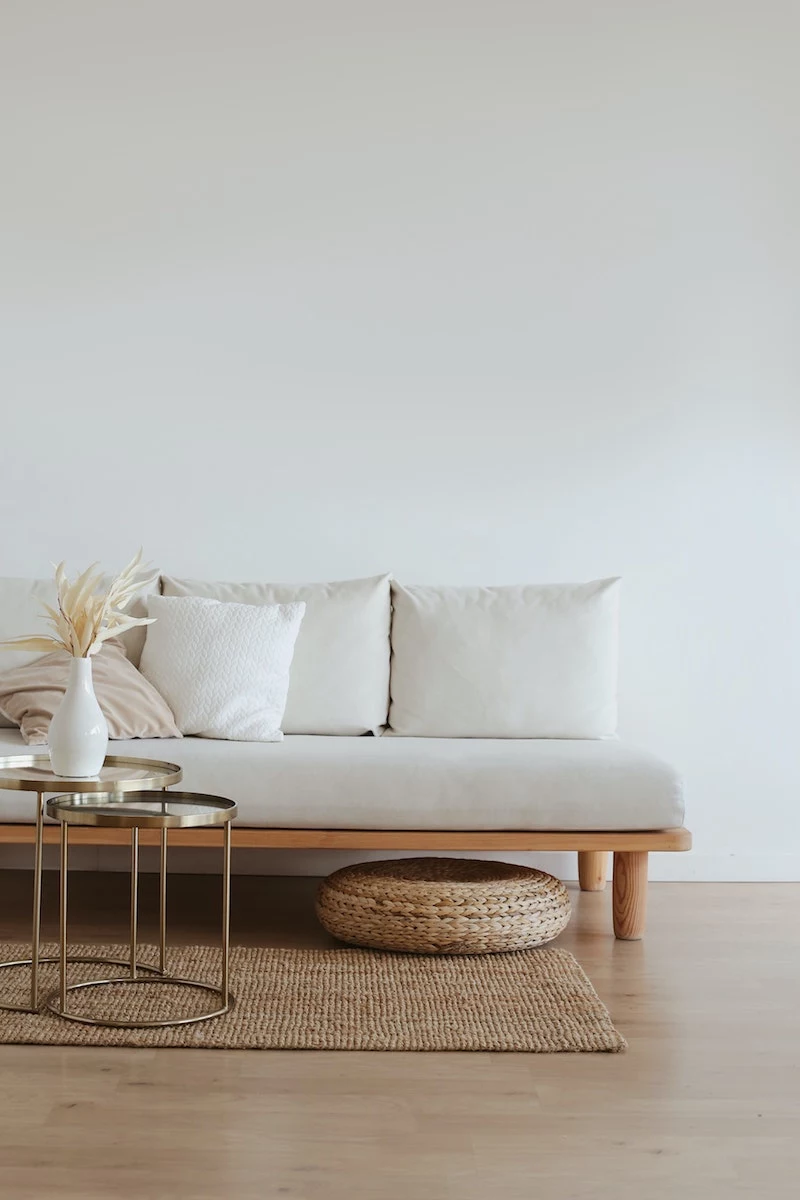Stop Redecorating Every Few Years: The Pro’s Guide to a ‘Forever’ Room
You know that feeling when you walk into a room and it just feels… right? It’s settled, comfortable, and looks just as good today as it did a decade ago. Then there are other rooms that feel tired and dated almost overnight. What’s the secret? I can tell you it’s not about having a huge budget or chasing every new trend on social media.
In this article
After walking through countless homes, I’ve seen the same pattern over and over. People get caught in an expensive and exhausting cycle of redecorating every few years because they build on a shaky foundation. So, I want to share a different approach. It’s a philosophy centered on creating a durable, beautiful ‘shell’ for your home that can adapt and evolve with you.
The goal is to be smart about where you spend your money. Invest in the things that are a huge pain (and cost!) to change—your floors, your walls, and your big anchor furniture. When you get these ‘bones’ right, you can completely change the vibe of a room with smaller, more affordable updates. This isn’t about one specific style; it’s about the principles of quality that work for any home, from traditional to ultra-modern.

The Foundation: Surfaces That Actually Last
Let’s start with the biggest surfaces in any room: the floors and the walls. They are the canvas for everything else. Choosing a cheap, trendy option here is a recipe for future headaches. I’ve seen it a hundred times—a client picks a flimsy laminate floor because it looks great in the showroom, only to call me three years later because it’s chipping and swelling from a single spilled drink.
Let’s Talk Floors: More Than Just Something to Walk On
Flooring takes a beating every single day from foot traffic, furniture, pets, and sunlight. Choosing the right material for your lifestyle is probably the single most important decision for a room’s long-term success.
When it comes to wood, you’re generally looking at two main options: solid hardwood and engineered wood. Solid hardwood is the classic choice for a reason—it can literally last for a century or more because you can sand it down and refinish it multiple times. A good oak floor is a reliable workhorse. If you have crazy-high traffic, you could look at harder woods like Hickory, but they do cost more.

But don’t sleep on engineered wood! It’s a fantastic alternative, especially in places with big humidity swings, like basements. It’s made of a real hardwood layer on top of a super-stable plywood core. Heads up, though: its lifespan depends entirely on the thickness of that top layer. A cheap version might have a paper-thin veneer you can’t refinish at all. If you want the option to refinish it down the line, make sure the veneer is at least 3mm thick. Always ask the supplier.
So, what’s the real cost difference? It might not be what you think. Expect solid oak to run you about $8 to $15 per square foot installed. A high-quality engineered wood often lands in the $7 to $12 range. That cheap, tempting laminate that will cause you grief later? That’s usually in the $2 to $4 bucket. You get what you pay for.
What About Carpet?
Carpet gets a bad rap, usually because the wrong kind was installed in the wrong place. For a living room or hallway, you need to be picky. Nylon is the most resilient fiber you can get; it has excellent ‘memory’ and bounces back from being crushed. Polyester is cheaper and great for stains but tends to mat down faster.

When I’m helping a family choose carpet, I look at the pile density and twist level. A dense pile means the fibers are packed tight, giving more support. A simple test? Press your fingers into the sample. If you can easily feel the stiff backing, it’s not very dense, and it will look worn out in no time.
And before you decide to rip out a quality carpet that just looks tired, consider a professional cleaning. I’m not talking about those rental machines at the grocery store—those often leave the carpet sopping wet, which can lead to mold. A certified pro uses a method called hot water extraction, which uses high pressure to blast out grime and a powerful vacuum to pull it all out. Expect to pay around $0.25 to $0.50 per square foot. A whole-house job might run you $300-$500, which is a fraction of the cost of new carpet!

A quick word on this: Make sure you hire a technician certified by the IICRC. These pros are trained to know the difference between fibers and use the right cleaning agents. Using the wrong stuff on a wool carpet can ruin it permanently. It’s a standard of quality, not just a random preference.
Walls: The Power of Paint and Prep
The idea of a neutral wall color isn’t about being boring—it’s about being strategic. Painting is disruptive. Choosing a versatile color like a soft gray, a warm white, or a gentle beige creates a backdrop that works with anything. Not sure where to start? Some timeless go-to colors the pros use are Benjamin Moore’s ‘Revere Pewter’ or Sherwin-Williams’ ‘Alabaster’.
When you look at a paint chip, find the Light Reflectance Value (LRV). A high number (near 100) reflects more light, making a room feel bigger. A low number (near 0) absorbs light, making it feel cozier. For sheen, eggshell is the perfect middle ground for most living rooms and bedrooms—it has a subtle glow and is way easier to clean than a flat or matte finish.
Oh, and here’s a professional secret: a great paint job is 80% preparation. This is where everyone cuts corners. A pro spends most of their time on the prep work that makes the paint last.
Here’s the non-negotiable prep list:
- Clean the walls. Use a TSP substitute to get rid of any grime.
- Fix imperfections. Spackle any holes or dings and sand them perfectly smooth.
- Caulk the trim. Fill in the gaps between walls and trim for a seamless look.
- ALWAYS use a quality primer. I’m serious. A product like Zinsser 1-2-3 seals the wall and helps the paint stick. Skipping this is why DIY jobs often fail.
Investing in the Big Stuff: Your Core Furniture
With your durable foundation set, it’s time to talk about the main furniture: your sofa, armchairs, and dining table. This is where you want to spend the biggest chunk of your furnishings budget. ‘Fast furniture’ made from particleboard just isn’t built to last—it rarely even survives a single move.
How to Spot a Sofa That Won’t Sag
A sofa is the workhorse of your living room. A cheap one will sag and creak within a couple of years. A well-made one can last for decades and can even be reupholstered for a whole new life. So how do you tell the difference?
First, price can be a big clue. A ‘fast furniture’ sofa might only be $500, but a quality piece with a kiln-dried hardwood frame usually starts around $2,000 and can easily go up to $5,000 or more. The investment pays off over its 15-20 year lifespan.
The frame should be solid, kiln-dried hardwood. The next best thing is furniture-grade plywood. Avoid particleboard or pine frames like the plague. For suspension, an 8-way hand-tied spring system is the gold standard, but a sinuous spring construction is also very good. For cushions, look for high-density foam—anything with a rating of 1.8 pounds per cubic foot or higher.
Want to test it out in the store? Go try the ‘lift test’ on a sofa you’re considering. Try to lift one of the front corners or legs. If the frame feels flimsy or twists, it’s weak. A solid frame will feel rigid, and the entire side of the sofa will lift evenly. Now go try it on your own sofa—you’ll immediately know what a good frame feels like!
If you’re not sure where to start looking, stores like Crate & Barrel or Pottery Barn often build their furniture to these quality standards and are a good place to see what a quality frame feels like in person.
The Fun Part: Adaptable and Replaceable Accents
Okay, once you have your forever foundation and your investment furniture, this is where you can finally have some fun! The final layers are where you can play with trends and inject your personality without a huge financial commitment.
Textiles: The Easiest Makeover Ever
Throw pillows, blankets, area rugs, and curtains are the fastest way to change a room’s entire personality. Got a neutral gray sofa? Add navy and gold pillows for a classic look, or switch to earthy linen and jute for a relaxed, natural feel. It’s that easy.
Pro Tip: This is a classic designer trick. Always buy a pillow insert that’s one or two inches larger than your pillow cover (for example, a 20×20 inch insert for an 18×18 inch cover). This makes the pillow look incredibly full and expensive, not sad and deflated.
Lighting: It’s All About the Mood
A single, harsh overhead light can make any room feel like a sterile office. Good lighting is layered: you need ambient (overall) light, task light (for reading), and accent light (to highlight art). By the way, here’s the single easiest and cheapest upgrade you can make. Swap your main room’s light bulbs to warm white (look for 2700K on the box) and install a dimmer switch. The whole project costs less than $30 at a hardware store and completely transforms the atmosphere of your space.
Heads up! While changing a fixture seems easy, please hire a licensed electrician for any hardwiring. I’ve seen the scorch marks from DIY jobs gone wrong. It’s not worth the risk.
A Touch of Green
Live plants add so much more life and texture to a space than cut flowers ever could. Plus, they clean the air! If you don’t have a green thumb, start with something nearly indestructible. The Snake Plant and the ZZ Plant are famous for tolerating low light and infrequent watering. A Pothos is also great because its leaves will visibly droop when it needs water, taking all the guesswork out of it.
From my experience, yellowing leaves almost always mean you’re overwatering. Brown, crispy edges usually mean the air is too dry. And a crucial disclaimer: if you have pets or small kids, always check if a plant is toxic before bringing it home. The ASPCA website has a great list for this.
In the End, It’s About Building for Your Life
Creating a room with real longevity is a mindset shift. It’s about moving away from disposable design and embracing thoughtful investment. When you build a durable shell and choose well-made core furniture, you’re creating a space that will serve you for years, not just a season.
The final layers—the pillows, the art, the plants—are where your home gets to live and breathe with you. This approach doesn’t just save you money and stress; it helps you build a space that is a true reflection of your life, ready to grow and adapt right alongside you.
Inspirational Gallery
When choosing your ‘forever sofa,’ look beyond the initial color. The silhouette and construction are what grant it longevity. A classic shape like an English roll arm or a simple track arm will outlast fleeting trends. Test the frame; it should be solid hardwood, not particleboard. And ask about the cushion fill – a high-density foam core wrapped in down will retain its shape and comfort far better than a pure foam or fiberfill option. Think of it as the most important investment in your living room’s comfort.
What’s the secret to a wall color that never gets old?
It’s about choosing a neutral with personality. Look for colors with complex undertones that shift with the light throughout the day. Instead of a flat builder’s beige, consider a soft, warm gray-beige like Benjamin Moore’s ‘Revere Pewter’ for a cozy, enveloping feel. For a brighter, more architectural look, a complex off-white with a hint of gray, such as Farrow & Ball’s ‘Ammonite’, provides a sophisticated backdrop that works with any style of furnishing you might add later.
- Adds visual weight and a sense of history.
- Incredibly durable and easy to clean.
- Each piece has unique, natural patterning.
The secret? Investing in key pieces made from natural stone. A travertine coffee table or a marble-topped console isn’t just furniture; it’s a timeless anchor that brings an organic, sculptural element into your room, grounding it with a material that has been used for centuries.
The right rug: It should anchor the room, not overwhelm it. For a timeless choice, opt for a high-quality wool or silk-blend rug in a classic pattern like a Heriz or a subtle geometric. These designs have been loved for generations for a reason.
The trendy alternative: A bold, graphic-print polypropylene rug might be eye-catching now, but its synthetic feel and loud pattern will likely feel dated and cheap in just a few years. For a durable foundation, natural fibers and classic motifs are the smarter long-term investment.
Think of your lighting in layers to create a truly timeless and functional atmosphere. Relying solely on a central ceiling fixture often creates harsh shadows and a flat, uninviting mood. A successful room combines three types of light:
- Ambient: The overall illumination, provided by your ceiling fixture or recessed lights.
- Task: Focused light for activities, like a reading lamp beside a chair or under-cabinet lighting in a built-in.
- Accent: Light that highlights features, such as a picture light over art or an uplight behind a plant.
A common mistake: Neglecting texture. A room filled with only smooth, flat surfaces—even in a beautiful color palette—can feel sterile and uninteresting. The key to a rich, timeless space is layering a variety of textures. Think of the soft plushness of a velvet pillow, the rough weave of a linen curtain, the smooth coolness of a ceramic vase, and the rustic grain of a wooden bowl. These tactile details are what make a room feel complete and inviting.
The ’80/20′ principle is a designer’s best friend for creating a lasting look.
This means dedicating 80% of your room to timeless, neutral, and high-quality foundational pieces (your sofa, floors, and key furniture). The remaining 20% is where you play with trends. Indulge in that fashionable color with inexpensive cushions, add a trendy sculptural object, or hang a print that feels very ‘now’. This approach allows you to keep your space feeling fresh and personal without committing to expensive items that will quickly date.
Window treatments are the ‘eyebrows’ of a room—get them wrong, and the whole expression is off. For an enduring look, steer clear of loud, small-scale patterns or fussy valances. Simple, floor-length curtain panels in a solid, high-quality fabric like linen, cotton velvet, or a raw silk blend will add softness and sophistication that transcends any trend.










